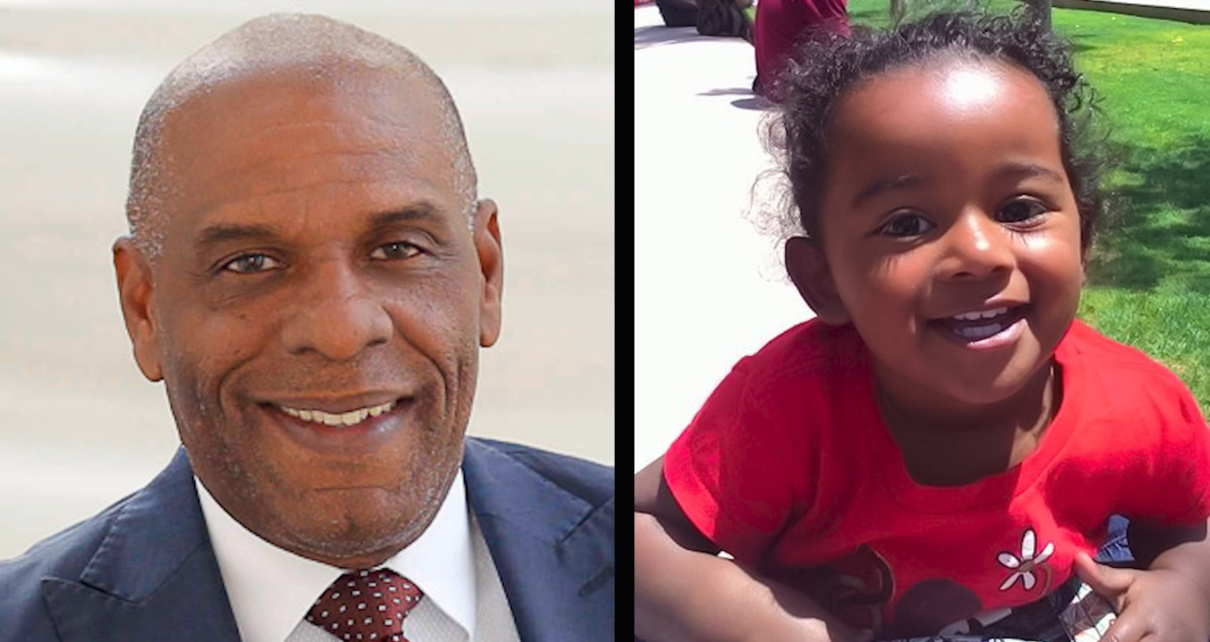LOS ANGELES—California’s new Ebony Alert law to address the crisis of Black children and women between the ages of 12 and 25 who are reported missing under unexplained or suspicious circumstances took effect on Jan. 1.
On Jan. 4, the California Highway Patrol issued the first Ebony Alert for a missing 17-year-old girl who had last been seen on Dec. 30, according to the Daily Breeze. It indicated that on Jan. 4, the Long Beach Police Department requested the alert and a detective found the teen unharmed on Jan. 5.
In Oct. 8 of last year, Governor Gavin Newsom signed the legislation which was introduced by Senator Steven Bradford (D-35th District) in March 2023. It was sponsored by the NAACP California Hawaii State Conference. With it, California became the first state to create an alert notification system to address such crises, noted Sen. Bradford in a recent press statement.
“Our Black children and young women are disproportionately represented on the lists of missing persons. This is heartbreaking and painful for so many families and a public crisis for our entire state. The Ebony Alert can change this,” stated Sen. Bradford.

According to the Black and Missing Foundation, 38 percent of children reported missing in the U.S. are Black, though Black people make up just 13-14 percent of the country’s population.
Further, Black women and girls are at increased risk of being harmed and trafficked. A recent report on human trafficking incidents across the country found that 40 percent of sex trafficking victims were identified as Black women.
Since passed, the Senate Bill 673 now authorizes a law enforcement agency to request that an Ebony Alert be activated by the California Highway Patrol if the investigating agency determines that it would be helpful. Similar to the Amber Alert, the Ebony Alert would activate electronic highway signs to alert the public of the missing person. The AMBER Alert (America’s Missing Broadcast Emergency Response system) was founded in 1996 after the kidnapping and murder of nine-year-old, Amber Hagerman.
The Ebony Alert also encourages television, cable, online, radio, and social media outlets to cooperate with disseminating the information contained in it.
“The evidence and examples of living here in California and across the country and seeing how the lack of attention is shown when African American girls and women disappear versus our White counterparts, and the level of media attention and the number of digital boards on our freeways that we see all the time making you aware of someone missing, but rarely is that same level of attention by the media and law enforcement directed toward African American girls and women,” Sen. Bradford told The Final Call in a previous interview.
Rick Callendar, president of the NAACP California Hawaii State Conference, labeled the bill’s signing a historic breakthrough and a great first step to mitigating the racial inequities when it comes to Black women and children when they go missing.
“This is a problem that affects the Black community more than anybody else in the United States,” said Mr. Callendar. “If you look at this, Black people represent 13 percent of the U.S. population, yet we account for almost one-third of nearly half-a-million people who are reported missing, and most of them are young Black women and young Black girls. If we don’t address taking care of our own, who else is,” he told The Final Call.
Black people need to also look within, he added. For example, often when they go missing, Black people are labeled as runaways or something else, and it takes months before any kind of alert is put out, noted Mr. Callendar. “We have to take care of our own. The reality is that yes, Black girls, yes, Black boys, yes, Black women go missing more than any other, and if we didn’t call it out, who else would?” he said.

According to Mr. Callendar, some folks pushed back against the legislation, calling it racist. But it’s not, he argued. The aim is equity in the coverage that it takes when a missing person is called, he continued.
“The reality is that if we had blonde hair and blue eyes, we’d be on the front of the screen. Unfortunately, we’re not and yet we’re still accounting for more than one-third of the population that goes missing,” argued Mr. Callendar. “We’re just trying to address one of the policy problems that we see really happening in California and what my hope is, is so goes California, so goes the nation,” he added.
“Law enforcement will hopefully dedicate the same level of resources and man hours to searching for these African American individuals who disappear as they do everyone else, so I’m just hoping it heightens the awareness but, most importantly, it brings these women and girls home to their loved ones,” he said.
The new alert system’s implementation just gives law enforcement another resource to assist in trying to find individuals and do it faster, Ricardo Ortiz, California Highway Patrol Valley Division Public Information officer told The Final Call.
“Anytime anybody goes missing, whether it’s under suspicious circumstances or otherwise, it’s a significant concern and as a law enforcement agency, we treat all of these seriously and we don’t favor one or the other,” stated Ofc. Ortiz.
While he signed the bill, Gov. Newsom said his administration had broader concerns that were clearly expressed to the author throughout the process, for example, the criteria in it “are expansive and do not align with the criteria in existing alerts such as the Amber Alert, Endangered Missing Advisory, Feather Alert and Silver Alert,” he said.
“Our emergency alert system is dependent on people not being fatigued by it and thus ignoring it. Our challenge is to achieve balance between the imperative to notify the public quickly in cases of missing persons or dangerous situations, but to not desensitize that same public by sending too many notifications,” continued Gov. Newsom in an Oct. 8 statement of the signing.
To work towards this balance, he said he has directed the California Highway Patrol and the Office of Emergency Services to propose reforms through the budget to ensure consistency for all of California’s alert programs and looked forward to working with the Legislature to accomplish this work.
In order for an Ebony Alert to be activated, a law enforcement agency may consider that the additional following criteria have been met, according to California Highway Patrol: the missing person suffers from a mental or physical disability; is missing under circumstances that indicate that their physical safety may be endangered and/or they may be subject to trafficking.
Other criteria are that the law enforcement agency determines that the person has gone missing under unexplained or suspicious circumstances; it believes that the person is in danger because of age, health, mental or physical disability, or environment or weather conditions; that the person is in the company of a potentially dangerous person, or that there are other factors indicating that the person may be in peril; it has utilized available local resources; and there is information available that, if disseminated to the public, could assist in the safe recovery of the missing person.
“I look at the Ebony Alert, the Amber Alert. They even have a Feather Alert for those in the Indigenous community, and a Silver Alert for the senior citizens. I look at all of them as ways to cover up the madness,” stated Danielle X Perkins, founder of Silent Crimez, a non-profit organization that brings resources, connections, healing, healthy conversations, and search-and-rescue when dealing with sex trafficking, human trafficking, organ harvesting, molestation and domestic abuse.
“Truth be told, California is one of the top five trafficking avenues, not just the Black community, but you have the Indigenous community—those coming in from South America, who want to get away and find a safe place to live and raise their children, but it’s not happening,” Ms. Perkins told The Final Call.
Currently, in California, there are 140,000 Black children missing under the age of 17, noted Ms. Perkins, echoing 2022 National Crime Information Center statistics. Out of that, 77,000 of them are girls, she stated and added that those numbers alone may or may not be correct. But the reality is, Black people are merchandised, she stated. “That goes back to 1555 when we came over here on these ships, we were merchandise then. Nothing has changed,” she stated.
The only and best solution is to separate, said Ms. Perkins, lifting the Teachings of the Most Honorable Elijah Muhammad, as taught by the Honorable Minister Louis Farrakhan, his National Representative and Chief Student. She also highlighted the way separation was delivered and explained so beautifully and strongly by Minister Farrakhan’s National Spokesperson, the late Student Minister Dr. Ava Muhammad (May Allah be pleased).
“Get away from the enemy. We have to get our own community, to patrol our own streets, to be able to patrol our own schools, our own mosques, have our own foundational way of living that The God gave us as a way to do. We just have to follow our instructions,” said Ms. Perkins
“She (referring to Student Min. Ava Muhammad) was very driven and adamant about getting us to understand the importance, that we can cut the crime rate out. We can cut the molestation out. We can cut the domestic abuse out. We can cut out all of that, if we get our own communities,” she concluded.








